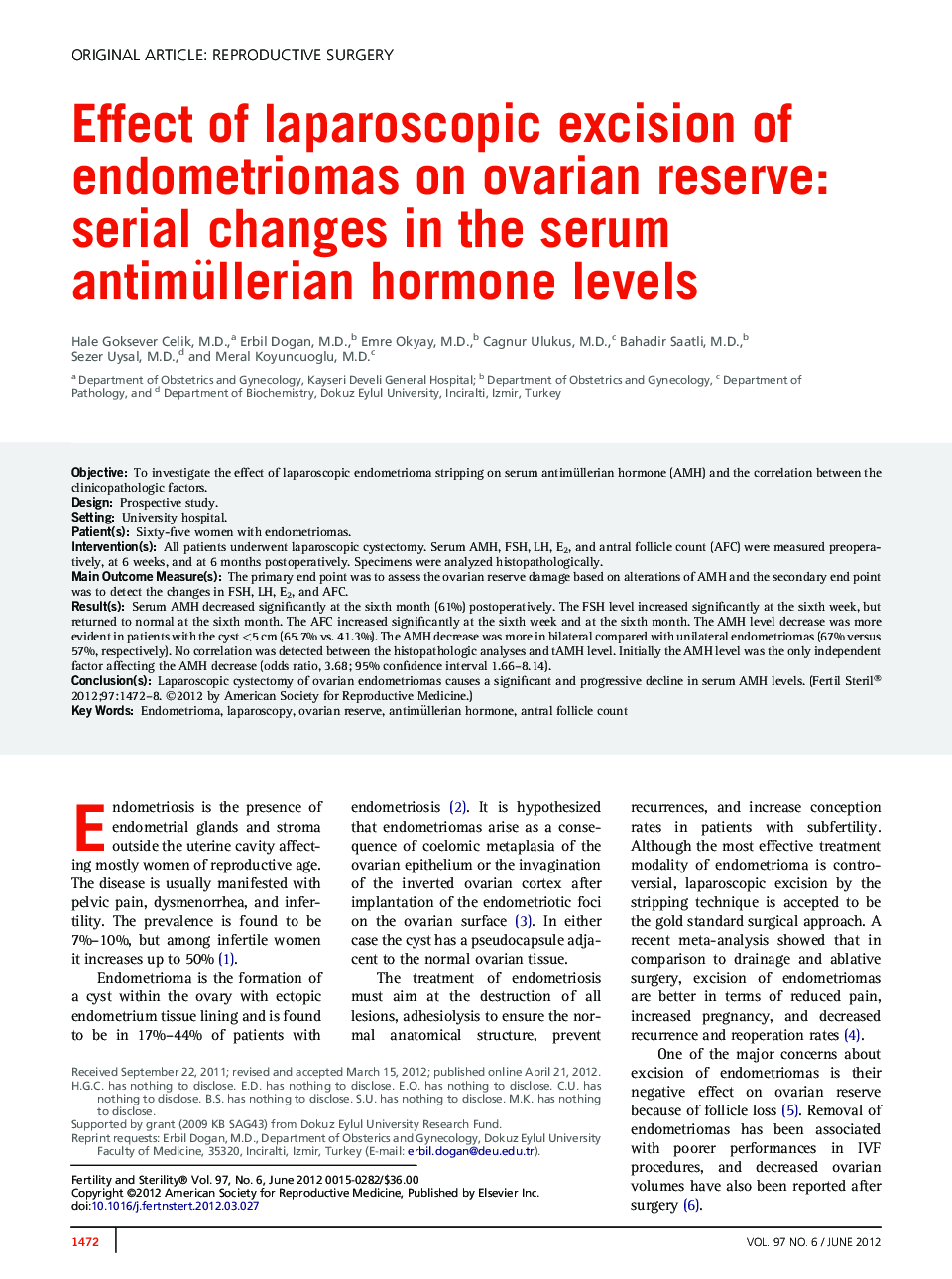| Article ID | Journal | Published Year | Pages | File Type |
|---|---|---|---|---|
| 3935341 | Fertility and Sterility | 2012 | 7 Pages |
ObjectiveTo investigate the effect of laparoscopic endometrioma stripping on serum antimüllerian hormone (AMH) and the correlation between the clinicopathologic factors.DesignProspective study.SettingUniversity hospital.Patient(s)Sixty-five women with endometriomas.Intervention(s)All patients underwent laparoscopic cystectomy. Serum AMH, FSH, LH, E2, and antral follicle count (AFC) were measured preoperatively, at 6 weeks, and at 6 months postoperatively. Specimens were analyzed histopathologically.Main Outcome Measure(s)The primary end point was to assess the ovarian reserve damage based on alterations of AMH and the secondary end point was to detect the changes in FSH, LH, E2, and AFC.Result(s)Serum AMH decreased significantly at the sixth month (61%) postoperatively. The FSH level increased significantly at the sixth week, but returned to normal at the sixth month. The AFC increased significantly at the sixth week and at the sixth month. The AMH level decrease was more evident in patients with the cyst <5 cm (65.7% vs. 41.3%). The AMH decrease was more in bilateral compared with unilateral endometriomas (67% versus 57%, respectively). No correlation was detected between the histopathologic analyses and tAMH level. Initially the AMH level was the only independent factor affecting the AMH decrease (odds ratio, 3.68; 95% confidence interval 1.66–8.14).Conclusion(s)Laparoscopic cystectomy of ovarian endometriomas causes a significant and progressive decline in serum AMH levels.
